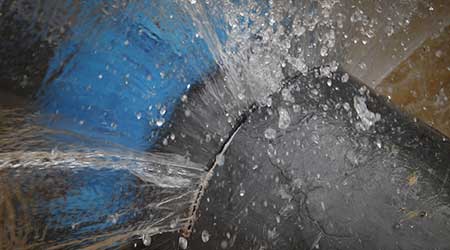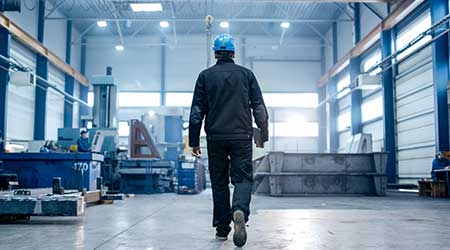Understanding New Leak Detection Technology
A number of new leak detection technologies have hit the market recently. Here's what facilities managers should know to choose the right solution for their facilities.
When it comes to selecting water leak detection technology, the myriad of solutions on the market to choose from can sometimes be daunting. Facility managers should understand the different types of systems of each option, along with their features/functions and pros and cons. Facility managers should also be familiar with the benefits of deploying water leak detection technology, along with the relevant industry standards and emerging trends.
It’s now commonplace for smoke alarms and detectors to be installed in businesses to alert occupants in the event of a fire. This technology has led to significant reductions in loss of life and property over the last several decades. However, when it comes to overall property losses, water is responsible for far more damage than incidents of fire. With such a statistic, you might expect water leak detection technology to be as widely deployed as smoke alarms and detectors, but this is not the case.
Investing in a water leak detection solution can provide the peace of mind that a facility is protected from water hazards ranging from a leaking pipe or appliance to sump pump failure or foundation water seepage. A wide range of water leak detection solutions are available, and they have become relatively inexpensive.
With the number of water leak detection solutions on the market, finding the right one for a specific application can sometimes be challenging. Let’s first take a look at the different types of solutions that exist:
• Battery powered sensors with alarm signal
• Primary powered system with battery backup
• Sensors with an alarm signal and alert capability via an email or text message
• Systems that are monitored by a third party who can alert the appropriate people
• Systems with sensors, alarm signal, and water shutoff capability
• Sensors that measure water flow
• Contact sensors
• Wicking sensors
• Acoustical water flow measuring devices
Perhaps the best systems are wireless with battery backup; incorporate multiple sensors, a local alarm, and an automatic water shutoff valve; and are monitored by a third-party service. While a leak detection solution with water shutoff capability is best, having a system that provides an alarm or alert is far better than having nothing at all. Some automatic shutoff valve systems do have at least one setback. Certain types of water valves work best when they are exercised occasionally. A build-up of scale and corrosion could cause shutoff valves to be difficult to operate. To address this problem, some systems have a function that exercises the shutoff valve.
Care should be taken with wireless systems to ensure proper communication between the sensor and the head-end unit. Consideration for the distance between devices and the head-end as well as the type of construction that RF signals are passing through (drywall versus concrete for example) is important. Some systems have better wireless range than others.
Most systems are battery-powered, so there is no need for a separate power supply and running wire to power the devices.
For some of the water flow sensors, it’s now possible to detect when a faucet is dripping or toilet is running. The technology is largely based on software algorithms that are able to identify the different “signatures” of water appliances.
Industry standards
Relatively few standards exist for water leak detection devices and systems. When searching for a solution that best meets your application, performance, reliability, interoperability, and safety are key factors to consider. If you’re going to invest in a water leak detection system, it should work as advertised. The UL 3225 standard has been specifically developed to address these factors. Below is a brief summary of the key attributes addressed by the standard:
• Performance under various environmental conditions
• Wireless performance (if applicable)
• Interoperability and compatibility, observing how the product functions together with other devices
• Cycles of operation to evaluate reliability
• Fire, shock, and casualty hazards
Products meeting a standard can offer the assurance that they meet at least a minimum set of requirements. Some manufacturers may go above and beyond the requirements of the standard to provide higher levels of performance and reliability. Certification to an applicable standard provides a baseline from which to compare products and assess price versus performance.
Related Topics:













